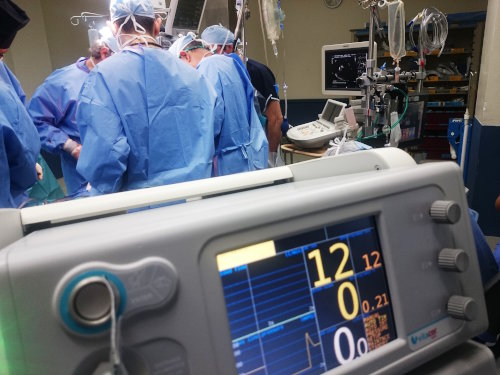Health Insurance

Health care expenses are high and marching higher with every passing year. Since the Affordable Care Act passed, health insurance is required in the United States—you cannot legally self-insure your health care costs. That’s okay, however, because most of us cannot afford hundreds of thousands of dollars in case of a major medical problem. Extreme chronic conditions could even cost millions. The ultra-wealthy can certainly self-insure such costs, but us mere mortals... no. You’ll need to buy health insurance.
But! You can partially self-insure some medical costs that potentially, over time, can save you a bundle of money. You do this with a high-deductible plan, and you self-insure the deductible. And, in a moment of stunning clarity, the government did something wonderful to help with this: the Health Savings Account (HSA).
What is a Health Savings Account (HSA)?

An HSA account is a purpose-built account to fund out-of-pocket medical expenses that insurance doesn’t cover. It acts as your float—but this float can only be used for health care expenses (including vision and dental). It will not cover things like cosmetic surgery or teeth whitening which have nothing to do with your actual health.
To qualify for an HSA account, you must have a high-deductible health care plan. In 2020, this means a deductible between $1,400 and $6,900 for an individual (or $2,800 to $13,800 for a family). The higher the deductible, the lower your premiums will be. And, as a general rule of thumb, the more you can self-insure, the more you will save—so high deductibles are good. The higher, the better! As long as your float can handle the claims.
If you have a chronic condition and you know ahead of time that you’ll run up thousands of dollars in medical bills annually, a high-deductible plan may not be your best option. It is still worth checking out, however, in case you can save more on the lower premiums and tax benefits of a high-deductible plan than the higher cost of a low-deductible plan.
For anyone in good health, a high-deductible plan will usually save you money in the end.
Besides saving on premiums, there is the HSA itself: it is a tax wonder! Money going into the account is not taxed, money earned in the account is not taxed and money leaving the account is not taxed. You can pay for medical expenses with 100% tax-free money—over decades, this alone can save you tens of thousands of dollars!
It can also double as a retirement account. Once you reach a certain age (65 in 2020), you are allowed to take money out of your HSA for any reason at all without penalties. Money not used for health care expenses must be taxed—just like a 401(k) or traditional IRA. Ideally, you would pull retirement money out of other accounts first and save the money in your HSA for health-related expenses for the tax benefit—but the money is accessible for other purposes.
If your life circumstances change and you get a job that provides health insurance (but not a high-deductible plan) or get married and fall under your spouse’s health insurance, you will no longer be able to contribute to your HSA—but you can continue to use the money in it for out-of-pocket health expenses for the rest of your life. It’s a great deal!
Cutting Your Medical Bills

Your HSA can potentially save you thousands of dollars over time by avoiding taxes, but now that you are on the hook for a high deductible, you also have direct control over many of your health care expenses. I’m going to list several companies and resources below. None of them compensates me—these are just resources I found and I think might be useful.
- The first thing is to find the best place to open an HSA. HSA Search will compare hundreds of different HSA providers. I suggest picking one with no monthly fees and provides an option for a self-directed brokerage account to invest the excess money that you won’t need for years or decades to come. Running a search on their website, Lively looks like a good option. I actually use HSA Bank, and I’m generally happy with them but they do have monthly fees (that I avoid only because I keep $3,000 in cash available to pay for emergency medical expenses). If you are opening a new account, though, Lively—at the time of this writing—looks like the best option to me.
- Shopping around is a great way to save money—and you can check prices for various procedures in your area at Healthcare Bluebook. ZendyHealth allows you to compare prices or even make a cash offer for specific services.
- A quick and easy way to save money: ask your medical provider about potential discounts. My dentist gives me a 5% discount if I pay with cash or check, so I always do that. If your HSA does not have check-writing privileges, you can pay the bill with cash or a personal check and reimburse yourself later from your HSA.
- Once you’ve seen a doctor and gotten treatment, you might need to fill a prescription. You can shop around for the best deals. A website like GoodRx will show prices for medications in your area, or order online at places like Blink Health.
- It’s worth checking out HSA Store occasionally. They sell only items that are eligible for HSA accounts and mark whether a prescription is necessary for it to quality. Even if you don’t buy anything from the website, it’s an easy way to check if a particular item is eligible or needs a prescription. I was surprised at how much was eligible!
And, just to be thorough, you can also save money the old fashioned way...with regular exercise and a healthy diet! A healthy lifestyle can avoid many medical problems and their costs.
Investing Your Float

Save the first few thousand dollars that you contribute toward your HSA in a savings account. It will not earn much, but you need enough to pay unexpected medical expenses. You need, at a minimum, enough money to cover your deductible. It will take at least a of couple of years of contributions before your HSA can fully cover a medical expense that hits your deductible’s limit.
After your HSA can cover your deductibles, however, the extra money sitting in a savings account making almost nothing in interest does you no good at all. At that point, it’s time to invest for real. The average American typically requires hundreds of thousands of dollars in health care costs after retirement, so investing the bulk of your Health Savings Account is essential.
How to invest is way beyond the scope of this website, but you are limited to the investing options that your HSA provides. I prefer using a self-directed brokerage (SDB) account since it allows me to choose from thousands of investment options from around the world at little or no cost.
I’m a big fan of How a Second Grader Beats Wall Street and invest my HSA using the techniques described in this book. I buy ETFs to spread my risk all around the globe and across different asset classes (bonds, domestic stocks, international stocks and real estate). Commissions are free. Life is good. At the end of each year, after contributing the maximum amounts to my HSA and paying any medical expenses, I move the excess cash into the brokerage account and rebalance my investments. Fast and easy!
If you’re older or no longer able to contribute to your HSA, you might move your investments into options that are more conservative. If you’re young and healthy and likely won’t need the money for decades, you can be more aggressive in your investment choices.
And then... just forget about them. Investments need time to flourish, so give them time to grow.
